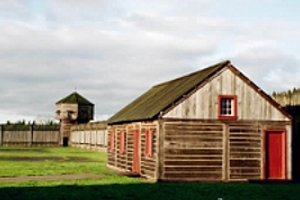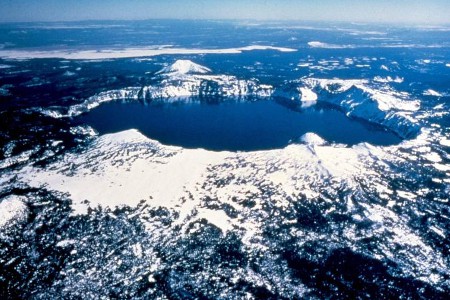
Image above: The flag of the Hudson Bay Company. Right: Officer mess and quarters, Fort Vancouver, Hudson Bay Company, 1860. Source: Library of Congress.
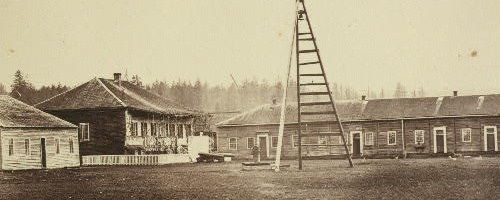
Fort Vancouver
When you visit Fort Vancouver, it's really a two unit experience. The fort itself in Vancouver, Washington tells the story of the men of the Hudson Bay Company and how their commercial enterprises led to the settlement of the northwest. The outpost was built as headquarters for the company in 1824. There were forty buildings inside the fort at one time.
Click here to Sponsor the page and how to reserve your ad.

Fort Vancouver Then
Fort Vancouver was a surprising place back in the early to mid-1800s. More populated than San Francisco, it was the hub of trading operation of the Hudson Bay Company. You'll learn about fur, and agriculture, about hardship, about how tough it was to be a man or woman in a territory that really was only on the cusp of being settled. There are demonstrations throughout the complex about how life was lived in the time, at locations like the Blacksmith Shop, Carpenter's Shop, the Bakehouse, the Gardens, and the Kitchen.
Remember, this was not a United States of America type of place during its first decades, but British, and even later when the fort became the Columbia Barracks, and associated with the USA, it kept history going as the home of the soldier force that allowed settlement of the area to take full bore, all the while displacing the Amerian Indians who called the lands home. It many ways it was a microcosm of American settlement, whether it be east or west coast, or anywhere in between for that matter. Exploration. Settlement. Displacement.
The Hudson Bay Company and Fort Vancouver - During the 1840's, Fort Vancouver was home to more people than San Francisco, even though it only had 700 people total at the fort. This was uncharted territory. To give you a taste of where the Pacific Northwest stood on the settlement chart; neither Seattle, Vancouver, or Portland existed yet. The village itself had fifty buildings.
The Barclay House - Located next door to the McLoughlin house in the Oregon City unit, it was constructed for Dr. Forbes Barclay in 1849. Both houses were originally on the waterfront and later moved to the bluff overlooking the Willamette River in 1910 (McLoughlin) and 1930 (Barclay). Barclay was an explorer colleague of McLoughlin who came into service of the Hudson Bay Company as surgeon and clerk, arriving at Fort Vancouver in 1840. He retired from the Hudson Bay Company in 1850.
Photo above: Reenactors entering the reconstructed Fort Vancouver. Courtesy National Park Service. Below: Barclay House. Courtesy National Park Service.
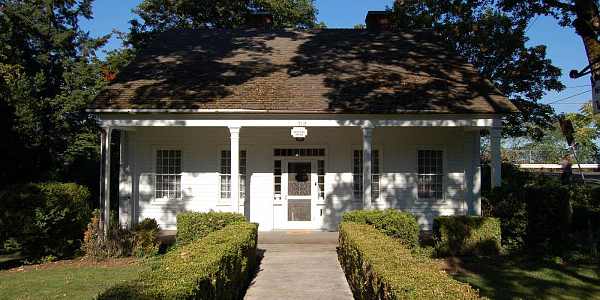
Fort Vancouver Now
Fort Vancouver - Take time in the visitor center, then take a self-guided, audio, or park ranger tour of the fort and village. There's also a stroll down to the Columbia River for those that like scenery after their history lesson.
McLoughlin House - This unit is actually two homes, the McLoughline House itself and the Barclay House. Tours begin at Barclay. Both homes are located in McLoughlin Park. The Barclay house holds a museum and gift shop.
A more recent addition to the Fort Vancouver NHS is the Pearson Field and Pearson Air Museum. No, this had nothing to do with the Hudson Bay Company, but is now part of the jurisdiction of the park. It tells the history of early aviation, including civilian, World War I, and a Soviet Union landing. Pearson is located in Vancouver, Washington directly across East Fifth Street from Fort Vancouver. Pearson also includes artifacts tieing the Fort Vancouver times to the Pearson days.
T-Shirts and Souvenirs

Fort Vancouver T-Shirts and Souvenirs. Official gear from America's Best History.
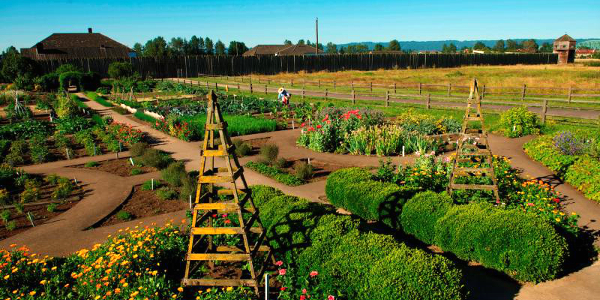
Fort Vancouver
Things You Should Not Miss
1. Take the Fort Vancouver tour. It's now only one of the options, where it used to be mandatory, but it still is probably the best. Let the park ranger take you back in time to the halcion days of northwest territory expansion, the Hudson Bay Company, and commerce before the mall and internet. They really know their stuff.
2. Drive down to the McLoughlin House and find out about the area of Oregon settlement that occured after the Hudson Bay Company's best days were done. It's twenty-five miles away across the Columbia River in Oregon City, Oregon. The home focuses on the McLoughlin family after their twenty-five years of being Chief Factor of Fort Vancouver was over. It tells the story about how John McLoughlin championed the settlement of the area as he urged wagon trains to traverse the Oregon Trail.
3. Tour the garden. It's a respite place on the Fort Vancouver site and modeled after the English garden kept there during the Hudson Bay Company days.
Photo above: The model garden at Fort Vancouver. Courtesy National Park Service.


